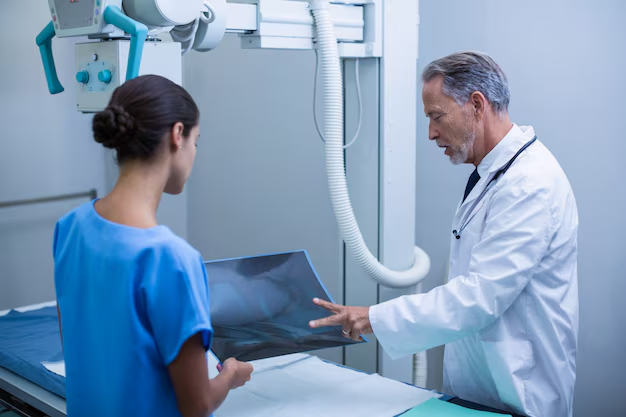Understanding the Causes of Osteoporosis: Key Factors and Insights
Imagine a world where your bones are as fragile as glass, liable to break with the slightest impact. For millions of people, this is not a distant fantasy, but a daily reality due to osteoporosis. Understanding what leads to osteoporosis can empower you to take preventive actions and maintain stronger bones. This article delves into the various factors contributing to this condition, providing a well-rounded analysis that you'll find both informative and engaging.
What is Osteoporosis?
Osteoporosis is a condition characterized by weakened bones, increasing the risk of fractures. This occurs due to a decrease in bone density, which is the amount of bone mineral in bone tissue. As bones become porous and fragile, even minor stresses like bending over or coughing can cause fractures, typically in the hip, spine, or wrist.
Genetic Factors: Are You Predisposed?
Genetics play a significant role in determining your risk of osteoporosis. If your parents or siblings have had osteoporosis or fractures, your chances might be higher.
Family History
- Parental History: If one or both of your parents had osteoporosis or frequent fractures, it's important to be proactive about bone health.
- Genetic Mutations: Certain genetic mutations affect collagen formation, which is crucial for bone strength.
While you can't change your genes, being aware of this risk factor can encourage preventive measures.
Age and Osteoporosis: The Impact of Time
Aging is a primary risk factor for osteoporosis. As you age, your body’s ability to re-absorb bone tissue diminishes, leading to bone thinning.
Why Does Aging Increase Risk?
- Hormonal Changes: Post-menopausal women experience a rapid loss of bone density due to decreased estrogen levels, a hormone vital for bone health.
- Bone Remodeling: With age, the rate of bone breakdown surpasses the rate of new bone formation.
Understanding the natural aging process can guide lifestyle choices to mitigate risk.
Nutrition and Bone Health: Fuel for Strong Bones
Diet plays a crucial role in maintaining bone health. Nutrients like calcium and vitamin D are critical for bone maintenance and growth.
Key Nutrients
- Calcium: Essential for bone strength, adults need a sufficient daily intake to maintain bone health.
- Vitamin D: Facilitates calcium absorption. Lack of sunlight exposure can lead to deficiencies.
- Protein: Vital for bone health, as it constitutes a significant portion of bones' structural framework.
Emphasizing a balanced diet rich in these nutrients can support strong and healthy bones.
Lifestyle Factors: Daily Habits that Influence Bone Health
Your lifestyle choices can either enhance or undermine your bone health. Recognizing these factors can help you make informed decisions to strengthen your bones.
Exercise and Activity Levels
- Weight-Bearing Exercises: Activities like walking, jogging, and dancing are great for building and maintaining bone density.
- Strength Training: Helps preserve bone mass by applying pressure on bones and muscles.
Alcohol and Tobacco Use
- Smoking: Tobacco use has been linked to weaker bones.
- Alcohol: Excessive consumption can interfere with the balance of calcium and vitamin D.
By adopting healthier habits, you can boost your bone health and decrease osteoporosis risk.
Medical Conditions and Medications: Hidden Influences
Certain chronic conditions and medications can lead to osteoporosis, often by altering the hormone balance or affecting nutrient absorption.
Chronic Illnesses
- Rheumatoid Arthritis: Inflammatory conditions can directly affect bone density.
- Diabetes: Altered glucose metabolism affects skeletal health.
Impactful Medications
- Corticosteroids: Long-term use can lead to weakened bones.
- Anticonvulsants: Some epilepsy medications can deplete calcium levels.
If you have any of these conditions or are on these medications, discussing bone health with a healthcare provider is essential.
Hormonal Changes: More Than Just Estrogen
While post-menopausal estrogen loss is a well-known factor in osteoporosis, other hormonal changes can also influence bone health.
Men and Osteoporosis
- Testosterone Levels: Low testosterone can lead to decreased bone mass.
- Endocrine Disorders: Conditions affecting thyroid hormones or parathyroid can impact bone density.
Understanding these hormonal influences can encourage proactive steps towards maintaining bone health.
Prevention: Steps to Build Better Bones
Prevention is key when it comes to osteoporosis. Taking actionable steps can help you maintain strong bones throughout your life.
Tips for Prevention
- Engage in Regular Exercise: Both weight-bearing and muscle-strengthening exercises are beneficial.
- Ensure Adequate Nutrition: Focus on a balanced diet rich in calcium, vitamin D, and protein.
- Limit Smoking and Alcohol Consumption: Both can affect bone health negatively.
- Regular Check-Ups: Bone density tests can help identify risks early on.
By integrating these preventive measures into your routine, you can work towards a healthier, fracture-free future.
Understanding the multiple factors leading to osteoporosis empowers you not only to avoid contributing behaviors but also to adopt health-enhancing practices. Keep in mind that while certain factors like genetics and age are beyond our control, lifestyle changes and prevention strategies can significantly impact bone health. Armed with this knowledge, you're well-equipped to take steps towards maintaining robust bones.
Quick Summary 🦴
- 👨👩👧👦 Genetic Factors: Family history can increase risk.
- ⏳ Aging: Natural bone density loss as you age.
- 🥦 Nutrition: Ensure adequate calcium, vitamin D, and protein intake.
- 🏃♀️ Lifestyle Choices: Exercise regularly, reduce alcohol, stop smoking.
- 🏥 Medical Impact: Chronic illnesses and certain medications affect bones.
- 🧑⚕️ Regular Check-Ups: Monitor bone density for early intervention.
These insights contribute to a deeper awareness, assisting you in making informed choices that pave the way for a healthier, more resilient frame as you age.

Related Articles
- a Nurse Is Caring For a Client Who Has Osteoporosis.
- a Percutaneous Is Performed To Treat Osteoporosis Related Compression Fractures
- Can Alcohol Cause Osteoporosis
- Can I Do Pilates If I Have Osteoporosis
- Can I Reverse Osteoporosis
- Can Men Get Osteoporosis
- Can Osteoporosis Affect Teeth
- Can Osteoporosis Be Cured
- Can Osteoporosis Be Painful
- Can Osteoporosis Be Reversed